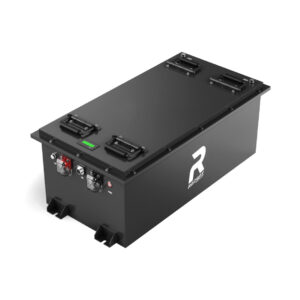How Do You Troubleshoot Common RV Battery Charging Issues?
Answer: To troubleshoot RV battery charging issues, check connections for corrosion, test voltage with a multimeter, inspect the charger for faults, and identify parasitic drains. Solutions include cleaning terminals, replacing damaged components, and upgrading to lithium batteries. Regular maintenance and monitoring ensure optimal performance.
Storing RV Batteries for Long-Term Inactivity
How Do You Diagnose a Faulty RV Battery Charger?
Use a multimeter to measure output voltage. A functional charger should read 13-14 volts for lead-acid batteries or 14-14.6 volts for lithium. No output? Check fuses, wiring, and AC power supply. Burnt smells or unusual noises indicate internal failure. Replace chargers with inconsistent voltage to prevent battery damage.

Advanced diagnosis involves testing amperage delivery. Connect a DC clamp meter to the charger’s output line – it should match 10-25% of the battery’s amp-hour rating during bulk charging. For example, a 200Ah battery requires 20-50A initial charge current. If readings fall short, inspect internal components like diodes and transformers. Many modern chargers feature LED status indicators: solid green = charging, flashing red = fault detected. Always consult manufacturer error codes before concluding repairs.
What Causes an RV Battery to Drain Quickly?
Common culprits include parasitic drains (e.g., refrigerators, alarms), sulfated plates, or aging cells. Test drains by disconnecting negative terminals and using a multimeter in series. Draws above 50mA suggest faulty appliances. Recharge batteries promptly and replace those holding less than 80% of their rated capacity.
Proper Charging Methods for RV Batteries
How Can You Test an RV Battery’s Health?
Perform a load test with a hydrometer (for flooded batteries) or a digital tester. Full charge voltage: 12.6-12.8V (lead-acid) or 13.3-13.4V (lithium). Voltage drops below 10.5V under load indicate failure. Check specific gravity readings between 1.265 and 1.299 for healthy lead-acid cells.
Why Do RV Battery Terminals Corrode?
Corrosion stems from hydrogen gas exposure, electrolyte leaks, or dissimilar metal reactions. Clean terminals with baking soda and water, then apply dielectric grease. Replace cracked battery cases. Use stainless steel terminals to minimize future corrosion.
Preventive measures include installing felt washers soaked in anticorrosion solution beneath terminal connections. Annual resistance checks using a micro-ohmmeter help detect early corrosion – readings above 0.1 ohms signal cleaning is needed. For dual-battery systems, ensure identical terminal materials (e.g., avoid mixing lead and copper). In coastal environments, apply marine-grade terminal protectors to combat salt-induced corrosion.
When Should You Upgrade to Lithium RV Batteries?
Consider lithium upgrades if frequent deep cycling, faster charging (2-3x lead-acid speeds), or longer lifespan (3,000+ cycles) are needed. Lithium batteries maintain voltage stability below 20% charge and weigh 50-60% less. Ensure your charger supports lithium chemistry to avoid compatibility issues.
| Feature | Lead-Acid | Lithium |
|---|---|---|
| Cycle Life | 300-500 | 3,000+ |
| Weight (100Ah) | 60-65 lbs | 25-31 lbs |
| Depth of Discharge | 50% | 80-100% |
“RV owners often overlook parasitic drain checks. A 2023 study showed 68% of ‘failed’ batteries just needed proper recharge cycles. Always use temperature-compensated charging in extreme climates. Lithium batteries now offer 10-year lifespans with proper management—a game-changer for full-time RVers,” says John Michaels, RV power systems expert at Redway.
Conclusion
Proactive troubleshooting combines voltage testing, load analysis, and regular maintenance. Addressing corrosion, upgrading components, and adopting lithium technology can resolve 90% of charging issues. Implement monitoring systems for real-time battery health insights.
FAQs
- How often should I test my RV battery?
- Test monthly during active use. Check voltage before and after charging, and perform load tests quarterly.
- Can I mix old and new RV batteries?
- Never mix batteries with more than 6-12 month age differences. Mismatched cells reduce performance by 30-40%.
- What’s the ideal charging temperature?
- Charge lead-acid between 50°F-86°F. Lithium batteries tolerate -4°F-131°F but charge fastest at 59°F-95°F.
